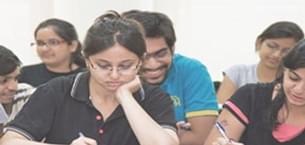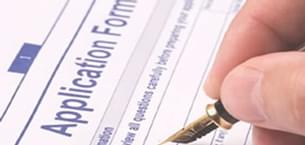.png?h=35&w=35&mode=stretch)
Yatin Kumar Study Abroad Content Specialist
Study Abroad Content Specialist
Every year, thousands of Indian students dream of studying in the U.S., but securing a US Students Visa (F-1 visa) is often surrounded by confusion due to prevalent myths and misconceptions. From the application process to the interview, there’s a lot of misinformation that may cause unnecessary stress. In reality, while the process of obtaining a U.S. student visa can seem daunting, understanding the facts behind these myths can significantly increase your chances of approval.
Also Read: US Student Visa Requirements

Myth: The U.S. Issues Visas Only to a Limited Number of Foreign Students
Reality:
This is one of the most widespread misconceptions. The U.S. government does not limit the number of student visas issued each year. The U.S. welcomes qualified students from all over the world. If you meet the requirements and have been accepted by a government-approved U.S. institution, you are eligible to apply for a visa.
- Key Fact: In 2023, India made up 29% of all international student visas issued by the U.S., with 130,839 student visas approved.
- Tip: Focus on fulfilling all requirements, including demonstrating your non-immigrant intent and proving you have the financial means to support your education.
Myth: Hiring an Education Agent Guarantees Visa Approval
Reality:
Paying a huge sum to education agents who claim to have "special connections" to U.S. authorities is a myth. No third-party agent can guarantee visa approval. The process is purely determined by U.S. consular officers, and they will assess your application based on facts, not on someone’s influence.
- Key Fact: Education agents cannot affect your visa outcome. Only the U.S. consular officer decides the result.
- Tip: Avoid agents who promise guaranteed approvals. Do your own research and work with reputable agencies for university admissions and documentation support.
Myth: You Must Show High Academic Scores to Get a Student Visa
Reality:
While a strong academic record is always beneficial, U.S. student visas are not exclusive to top scorers. All students who have been accepted to a recognized U.S. university can apply for a student visa. What matters most is that you demonstrate your academic intentions and financial capability.
- Key Fact: Students from varied academic backgrounds are granted U.S. student visas. Acceptance by a U.S. university is the first step, followed by demonstrating intent to return home after graduation.
- Tip: If you’re unsure about your grades, focus on strengthening your statement of purpose (SOP), financial documents, and explaining how studying in the U.S. will benefit your career in India.
Also Read: Documents Required for F1 Visa Interview
Myth: You Can’t Work While Studying in the U.S. on an F-1 Visa
Reality:
Contrary to popular belief, F-1 visa students can work part-time while studying in the U.S. Students are allowed to work up to 20 hours per week on-campus during the academic year and full-time during holidays. Additionally, after completing their degree, students can apply for Optional Practical Training (OPT) or Curricular Practical Training (CPT), which allows them to work off-campus.
- Key Fact: U.S. students can work on-campus part-time and gain practical experience through OPT after graduation.
- Tip: Ensure that your work does not interfere with your academic schedule, and follow U.S. immigration laws for work permits.
Myth: You Need a High TOEFL or IELTS Score for Visa Approval
Reality:
While English proficiency is essential for university admission, having an extremely high TOEFL or IELTS score does not guarantee visa approval. The consular officer will assess your overall application, including your academic background, study plans, and financial stability. A satisfactory English score, such as TOEFL 90 or IELTS 6.5, is typically sufficient, provided the rest of your application is strong.
- Key Fact: The minimum score requirement varies by university and program, and meeting the required score is the key to success.
- Tip: Focus on demonstrating your confidence in English, showing your ability to succeed in a U.S. academic environment.
Myth: A Student Visa Will Only Be Approved if You Have Relatives in the U.S.
Reality:
Having relatives in the U.S. is not a requirement for getting a student visa. However, the consular officer may inquire about any family ties in the U.S. This is to ensure that the applicant's intention is strictly temporary and that they have ties to their home country.
- Key Fact: Whether or not you have relatives in the U.S. does not directly impact your visa decision.
- Tip: Be honest if you have family in the U.S., but focus on your academic goals, and intent to return to India after your studies.
Myth: The U.S. Visa Process Takes Too Long, and You Can’t Get Your Visa in Time
Reality:
Though the U.S. visa process may seem lengthy, the embassies and consulates are working hard to accommodate the increasing demand for student visas. In 2024, the U.S. Embassy has started issuing student visa appointments earlier, beginning in May to handle the increased volume of applications.
- Key Fact: Visa appointments have been made earlier to accommodate high demand. You can expect processing to take a few weeks.
- Tip: Apply early, gather all required documents, and keep checking for available visa slots to avoid delays.
Myth: You Need a Scholarship to Get a U.S. Student Visa
Reality:
While scholarships are helpful, they are not mandatory for obtaining a student visa. What matters most is demonstrating that you have the financial means to support your education and living expenses. If you do not have a scholarship, ensure you provide bank statements, affidavits of support, or proof of income from your sponsor.
- Key Fact: Scholarships are not a requirement for visa approval; financial proof is key.
- Tip: Provide clear financial documentation to show that you or your sponsor have enough resources for tuition and living costs.
Myth: You Must Have Your Entire Future Career Plan Figured Out for the Visa Interview
Reality:
While it is important to demonstrate a clear academic and career plan, you don’t need to have every detail of your future career figured out. The consular officer is looking for your intent to study and your plans after completing your degree, but they don’t expect a detailed roadmap for the rest of your life.
- Key Fact: Focus on your education and how it aligns with your future career goals.
- Tip: Prepare a realistic study plan, but avoid providing an overly rigid career forecast.
Myth: You Must Return to Your Home Country Immediately After Graduation
Reality:
It is not mandatory to return immediately after your studies. U.S. student visa holders can apply for Optional Practical Training (OPT), which allows them to work for up to one year in the U.S. in a job related to their field of study. For students in STEM (Science, Technology, Engineering, and Mathematics) fields, OPT can be extended by 24 months.
- Key Fact: OPT gives students the opportunity to stay in the U.S. for up to three years after graduation.
- Tip: If you wish to stay in the U.S. for practical training, ensure that your field qualifies for OPT extension.
Also Check: Student Guide to Study in USA
The U.S. student visa application process can seem intimidating, but understanding the myths vs. reality can significantly ease your journey. Remember that honesty, preparedness, and financial documentation are the keys to success.
Follow the right steps, avoid common misconceptions, and stay informed about the latest requirements to enhance your chances of getting your F-1 visa approved. With proper preparation and a clear understanding of the visa process, you can confidently take the next step in your academic journey in the U.S.
















Comments